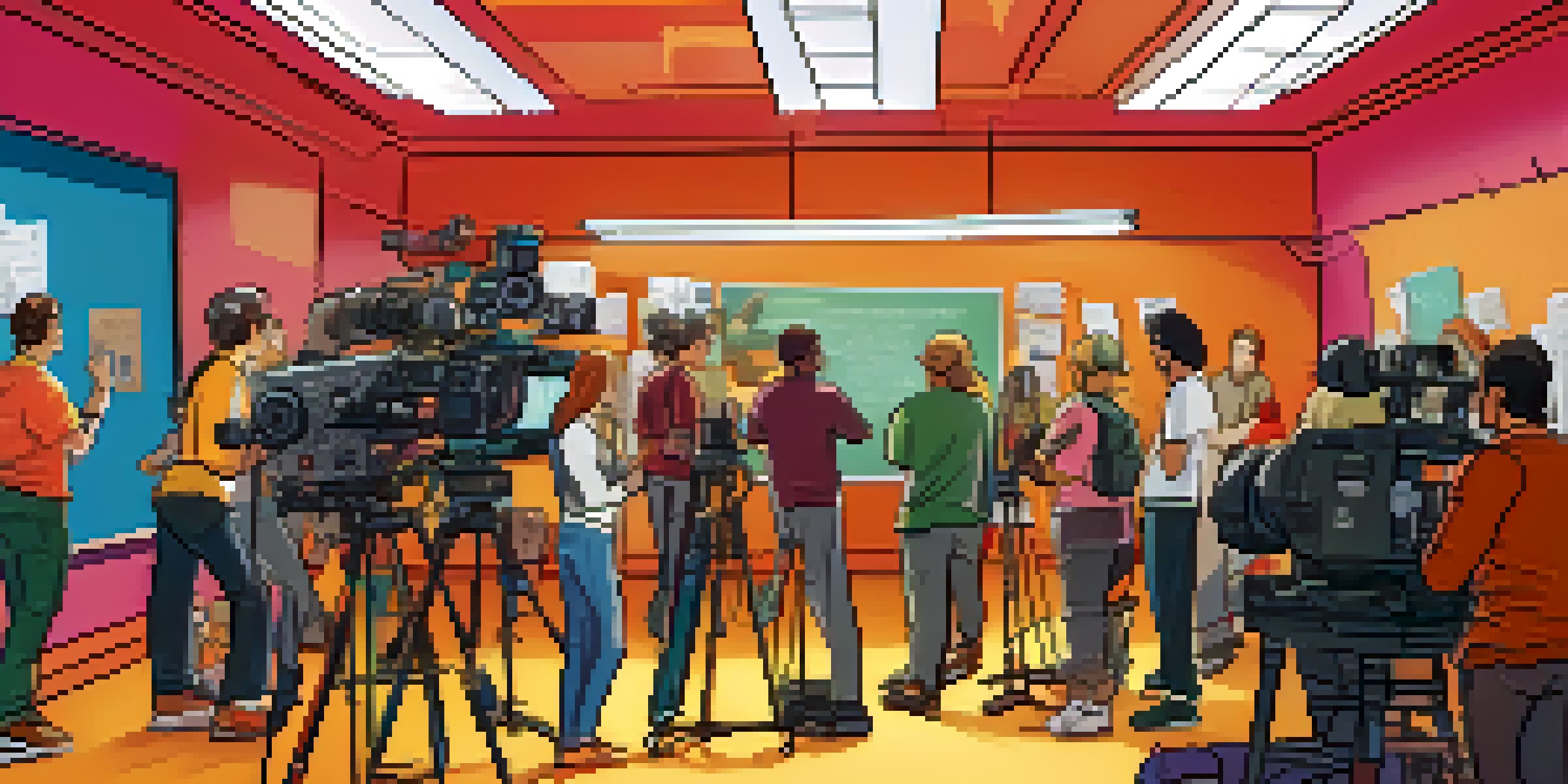Mastering Film Production: Techniques for Effective Collaboration

Understanding the Importance of Collaboration in Film
Collaboration is the heartbeat of film production. Every successful project hinges on a team working together harmoniously, blending creativity and skills. When directors, producers, and crew members unite, the magic of storytelling truly comes alive.
Talent wins games, but teamwork and intelligence win championships.
Think of a film set as an orchestra, where each player contributes to a symphony. A director is like a conductor, guiding the musicians to create a cohesive performance. Without collaboration, even the most talented individuals can produce disjointed results.
Establishing a collaborative atmosphere right from the pre-production stage sets the foundation for success. It encourages open communication and fosters a sense of shared ownership, which can enhance the overall quality of the film.
Building Trust Among Team Members
Trust is a crucial element in any collaborative environment. In film production, it enables team members to take creative risks, knowing their ideas will be valued. Establishing trust can lead to more innovative solutions and a more enjoyable working atmosphere.

One effective way to build trust is through team-building exercises that promote understanding and camaraderie. These activities can range from informal gatherings to structured workshops, all aimed at breaking down barriers and fostering relationships.
Collaboration Drives Film Success
A harmonious team blends creativity and skills, essential for effective storytelling in film production.
Additionally, transparent communication is key. When team members feel informed and included in decision-making processes, they are more likely to trust each other and work effectively toward common goals.
Effective Communication Strategies
Clear communication is essential in film production. It helps prevent misunderstandings and ensures that everyone is on the same page, from the script supervisor to the cinematographer. Regular check-ins can facilitate this process, allowing for feedback and adjustments as needed.
Alone we can do so little; together we can do so much.
Utilizing technology can also enhance communication. Tools like project management software and messaging apps keep everyone connected, even in the fast-paced environment of a film set. This can streamline updates and foster collaboration, especially when working with remote teams.
Lastly, encourage an open-door policy where team members feel comfortable sharing ideas and concerns. This approach creates an inclusive atmosphere and empowers individuals to contribute to the project’s vision.
Aligning Goals and Vision
Successful film productions begin with a shared vision. Aligning the goals of all team members ensures that everyone is working toward the same endpoint. This shared understanding not only enhances creativity but also minimizes conflicts down the line.
At the start of a project, consider holding a brainstorming session to discuss the film's vision. This collaborative effort allows everyone to present their ideas and perspectives, fostering a sense of ownership in the project’s direction.
Trust Fosters Creative Risk-Taking
Building trust among team members encourages innovative solutions and enhances the overall working atmosphere.
Regularly revisiting these goals throughout the production process can help maintain focus. As challenges arise, reflecting on the original vision can serve as a guiding light, helping the team navigate obstacles effectively.
Embracing Diversity in the Team
Diversity is a powerful asset in film production, bringing together different perspectives that enhance creativity. A diverse team can challenge conventional thinking and lead to more innovative storytelling. Embracing varied backgrounds and experiences can enrich the narrative and visual aspects of the film.
To create a diverse team, actively seek out individuals from different cultures, genders, and experiences during the hiring process. This not only strengthens the production team but also ensures a broader representation in the film's narrative.
Encouraging an inclusive environment where all voices are heard can lead to more dynamic collaboration. When everyone feels valued, the quality of work improves, resulting in a more compelling final product.
Handling Conflicts Constructively
Conflicts are inevitable in any collaborative effort, but how they are handled makes all the difference. In film production, differing opinions can arise from creative differences to logistical challenges. Addressing these conflicts constructively can lead to innovative solutions rather than roadblocks.
One effective approach is to promote a culture of problem-solving. Encourage team members to express their concerns openly and work together to find solutions. This not only resolves issues but also strengthens relationships within the team.
Diversity Enhances Creative Output
A diverse team brings varied perspectives that challenge conventional thinking and enrich the film's narrative.
Additionally, having a mediator or an experienced team member guide discussions can help keep conversations focused and productive. This ensures that all voices are heard while steering the team toward a resolution.
Evaluating Collaboration Post-Production
Once the film is completed, it's essential to evaluate the collaboration process. Reflecting on what worked well and what could be improved can provide valuable insights for future projects. This practice not only enhances individual skills but also strengthens team dynamics.
Consider conducting a debriefing session where team members can share their experiences and feedback. This open dialogue can foster a sense of closure and camaraderie, reinforcing the bonds built during production.

Ultimately, continually evaluating collaboration methods can lead to a more efficient and enjoyable filmmaking process. Each project is an opportunity to learn and grow, setting the stage for even greater successes in the future.